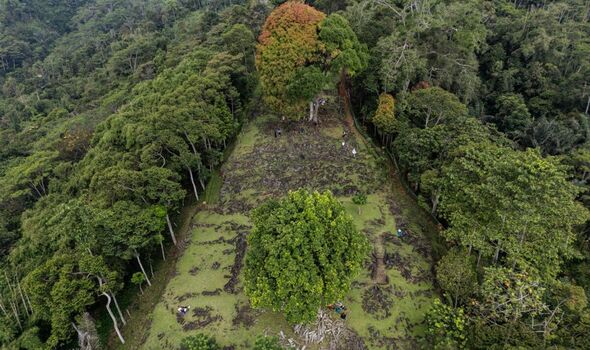Archaeologists in Indonesia believe they may have discovered the oldest pyramid in the world.
Currently, the Guinness World Records cites Djoser Step pyramid in Egypt as the world’s oldest (around 2,630 BC).
Located northwest of the ruins of Memphis, it is believed to be the first pyramid ever built.
It was erected in the 27th century BC during the Third Dynasty for the burial of Pharaoh Djoser.
However, a scientific paper published last October in the journal Archaeological Prospection claims Gunung Padang was an ancient pyramid built at least 9,000 years ago, with parts of the structure as old as 25,000 years old.
Gunung Padang sits on top of an extinct volcano in West Java and means “mountain of enlightenment”.
From afar, it looks like a pyramid and the top of the hill is broken down into a series of terraces, scattered with hundreds of pillar-like volcanic rocks.
Humans have visited the site for thousands of years, with pottery fragments dating from 45 BCE to 22 CE found there.
Archaeologists led by Danny Hilman Natawidjaja from the Indonesian Institute of Sciences conducted research at the site.
In their article, they claimed Gunung Padang was artificially constructed by an advanced civilisation.
The scientists said their scans indicated the presence of hidden chambers within the mound.
“This finding challenges the conventional belief that human civilisation and the development of advanced construction techniques emerged only during the warm period of the early Holocene or the beginning of the Neolithic, with the advent of agriculture approximately 11,000 years ago,” the study authors wrote.
“However, evidence from Gunung Padang and other sites, such as Gobekli Tepe, suggests that advanced construction practices were already present when agriculture had, perhaps, not yet been invented,” they added.
However, the report has been strongly criticised by other academics, who have questioned the methods used by the Indonesian scientists.
Flint Dibble, an archaeologist at Cardiff University, told the journal Nature that there is no clear evidence to suggest the buried layers were built by humans.
“Material rolling down a hill is going to, on average, orient itself,” he said, adding that there’s no evidence of “working or anything to indicate that it’s man-made”.
